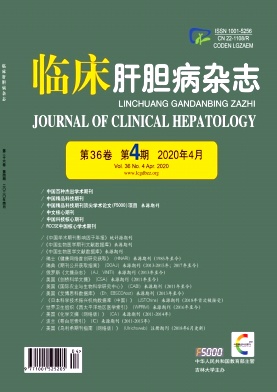Objective To investigate the treatment methods for multiple liver cancer in different liver segments meeting the Milan criteria.Methods A retrospective analysis was performed for the clinical data of patients with multiple liver cancer in different liver segments meeting the Milan criteria who underwent surgical resection or radiofrequency ablation in Department of Hepatic Surgery and Liver Transplantation Center,West China Hospital,from February 2009 to February 2013. A totle of 158 patients were divided into surgical resection group( n =110) and radiofrequency ablation group( n = 48),and the clinical effect of these two methods was compared. The chi-square test or the Fisher exact test was used for comparison of categorical data between two groups; the t-test was used for comparison of normally distributed continuous data between two groups,and the Mann-Whitney U test was used for comparison of non-normally distributed continuous data between two groups; the Kaplan-Meier method was used to analyze overall survival rate and disease-free survival rate,and the log-rank test was used for comparison of survival rates; the receiver operating characteristic( ROC) curve was used to investigate the association of degree of tumor differentiation with microvascular invasion. Results There was no significant difference in prognosis between the surgical resection group and the radiofrequency ablation group( 1-,3-,and 5-year overall survival rates: 94. 5%/55. 2%/28. 8% vs 83. 3%/50. 0%/26. 5%,χ2= 1. 161,P = 0. 281; 1-,3-,and 5-year disease-free survival rates: 86. 4%/42. 5%/21. 9% vs 79. 2%/37. 5%/11. 0%,χ2= 1. 771,P = 0. 183). There was a significant difference in prognosis between the patients without microvascular invasion and those with microvascular invasion( 1-,3-,and 5-year overall survival rates: 94. 6%/59. 1%/31. 8% vs 94. 1%/33. 1%/10. 1%,χ2= 4. 250,P = 0. 039; 1-,3-,and 5-year disease-free survival rates: 87. 1%/48. 1%/25. 0% vs 82. 4%/17. 6%/6. 1%,χ2= 8. 120,P = 0. 004). There was a significant difference in prognosis between the patients with poorly differentiated liver cancer and those with non-poorly differentiated liver cancer( 1-,3-,and 5-year overall survival rates: 91. 2%/33. 7%/4. 1% vs 96. 1%/64. 5%/39. 0%,χ2= 19. 092,P < 0. 001; 1-,3-,and 5-year disease-free survival rates: 79. 4%/10. 3%/3. 2% vs 89. 5%/56. 6%/31. 4%,χ2= 25. 973,P < 0. 001). There were no significant differences between the patients with en bloc resection and those with separate local resection in 1-,3-,and 5-year overall survival rates( 93. 7%/57. 7%/29. 8% vs 93. 3%/38. 9%/23. 3%,χ2= 1. 282,P = 0. 257) and 1-,3-,and 5-year disease-free survival rates( 85. 3%/46. 0%/23. 7% vs 86. 7%/26. 7/10. 0%,χ2= 1. 706,P =0. 191). There was no significant difference in postoperative complications between the surgical resection group and the radiofrequency ablation group( χ2= 3. 088,P = 0. 079),and no patient died within 30 days after surgery. Conclusion Surgical resection and radiofrequency ablation have a similar effect in the treatment of multiple liver cancer in different liver segments meeting the Milan criteria. En bloc resection and separate local resection have a similar clinical effect in patients undergoing surgical resection. Microvascular invasion of tumor and degree of tumor differentiation may affect the prognosis of such patients.







 DownLoad:
DownLoad: